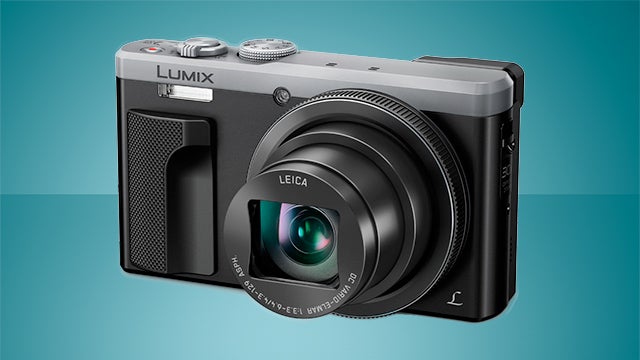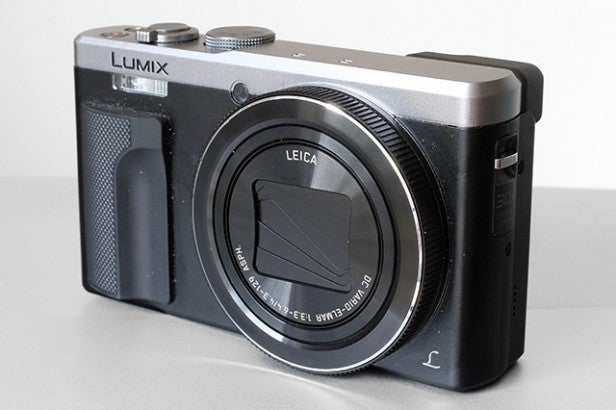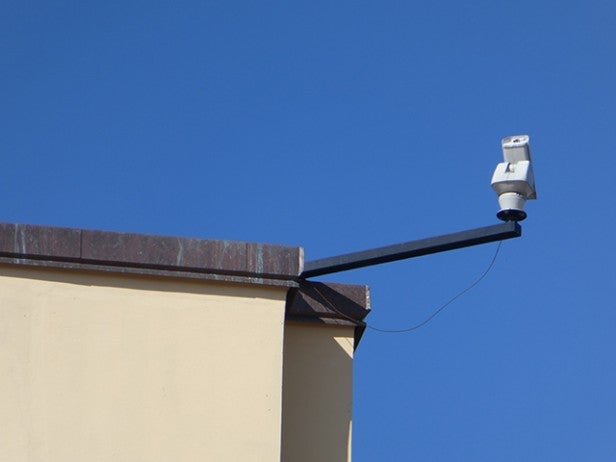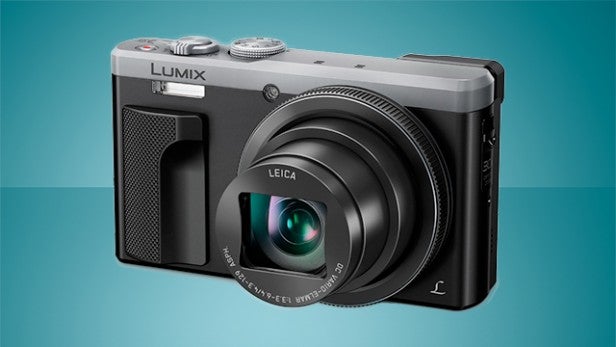Panasonic TZ80 Review - Image Quality, Video and Verdict Review
Image Quality, Video and Verdict
The camera equivalent of a sniper rifle

Sections
- Page 1 Panasonic TZ80 Review
- Page 2 Lens, AF and Performance Review
- Page 3 Image Quality, Video and Verdict Review
Panasonic TZ80 – Image Quality
One of the big differences between the TZ70 and the TZ80 is that this newer camera has a much higher-resolution sensor. You get 18 megapixels instead of 12.
The stumbling block is that both have small 1/2.3-inch sensors. This used to be the standard size for compact cameras, but is really best considered a smartphone-size sensor these days.
Sure enough, there are some image quality issues that mean this makes a pretty questionable upgrade for TZ70 owners. Thanks to lower resolution, that camera may even be able to hold up better at higher ISO settings.
The Panasonic TZ80’s native ISO range is 80-3200 (which can be extended to 6400, but you won’t want to), and when shooting with indoors lighting at f/3.3 aperture the camera auto-selects ISO at around 1000, resulting in very obvious noise. I’m talking about both the fizzy grainy stuff and colour noise, where purple patches start appearing all over the place.

For a look at how it compares with today’s best phone cameras, I put it up against the Samsung Galaxy S7. Using Aperture priority and iAuto, the phone easily bested the TZ80. The dedicated compact only starts to compete when the ISO is pushed down using shutter speed priority (shutter at 1/4 of a second).
Cameras like the TZ80 need to use tricks to get good results in imperfect lighting, but this one seems to be in denial. Now that so many capable compacts use 1-inch sensors, or even larger ones, it’s hard to accept the performance trade-offs of a 1/2.3-inch sensor in a camera of this price.
The lens arguably over-stretches itself too. At the further reaches of the zoom, images are quite soft, which the processing seems to compensate for using sharpening that means photos look quite noisy even close to base ISO.
Here are some shots I took using the camera:




Towards the further end of the zoom range, everything gets rather soft, even near the centre of the frame



This shot shows both why the zoom is great, and why it isn’t. This is shot at the full extent of the zoom, a shot you couldn’t get with any phone or ‘regular’ zoom camera, but even in this shrunken version you can tell it’s soft.


Here we see the TZ80’s relatively limited dynamic range in action, a result of the small sensor: blown-out highlights in the background and crushed detail in the foreground. Some shadow detail is recoverable through processing, mind.


Shot using the inbuilt monochrome mode, an easy way to give your shots an instant arty edge
Having an epic zoom range is great fun, but in terms of optical quality the Panasonic TZ80 lens is nothing to get too excited about.
Learn to work around the Panasonic TZ80’s limitations and it can make quite a neat holiday camera, though. Use the shutter priority mode when the light level becomes an issue and you can make the OIS work for you much more than it might otherwise. I’ve been using a 1/4-second shutter speed when shooting handheld, and that will let you take less noisy shots than you would with Auto.
This is when shooting at 24mm. Start using the zoom and you’ll have to speed up the shutter to avoid obvious blur.
Panasonic TZ80 – Video
Aside from the composition benefits of the whopping 30x zoom lens, the Panasonic TZ80 is just an ‘OK’ stills shooter, but it is ahead of the pack in video. It can shoot at 4K resolution, 25 frames per second.
Even at 4K it uses effective software stabilisation to get you smooth-looking handheld footage, and you can refocus easily during shooting using the touchscreen. Sound is captured with the stereo mic pair on the Panasonic TZ80’s top plate, but there’s no way to add an external mic to let you level-up audio quality.
This is a neat pocket 4K video machine, but it’s not going to appeal to semi-serious videographers in the way a Panasonic GH4 might.

Related: Best camera 2016
Should you buy the Panasonic TZ80?
The Panasonic TZ80 has all the features it needs to look like a serious compact. It has manual controls. It has an EVF. It has a 30x zoom lens. However, the hardware at its heart isn’t all that hot.
A small sensor, slow lens and a tendency to not make enough use of its OIS to counteract these limitations will leave you with pretty scrappy-looking images in less-than-optimal light.
Panasonic has done a good job of keeping up with tech by adding 4K video and an effective little EVF, but the more important image quality issue hasn’t been sufficiently addressed. Whether it can be in a compact superzoom is a legitimate question. However, with 1-inch-sensor compacts so common and the mobile phone cameras providing surprisingly good results, it’s becoming harder to get excited about the small-sensor superzoom.
Verdict
Great features and a flexible zoom don’t quite make up for the TZ80’s image quality issues.
Trusted Score
Score in detail
-
Value 6
-
Features 8
-
Image Quality 6
-
Build Quality 7
-
Performance 7


